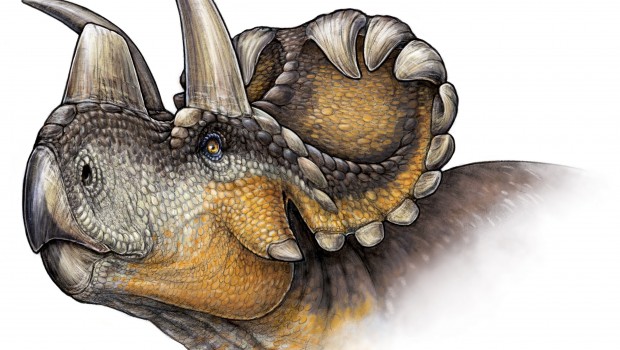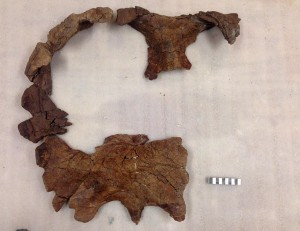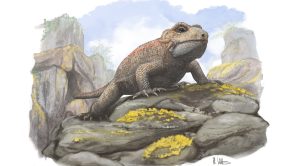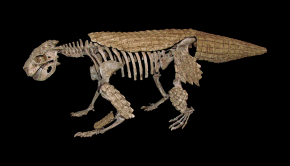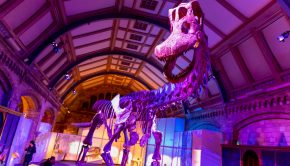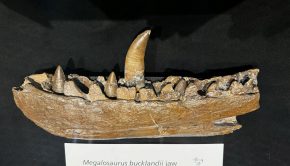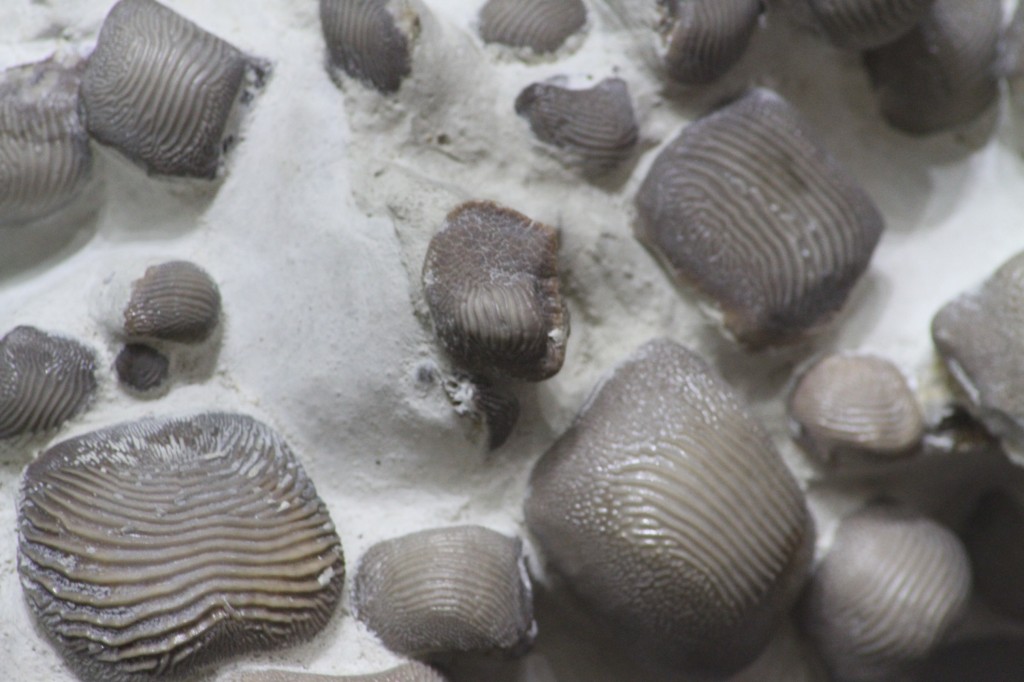New ceratopsian – Wendiceratops
Today, a new ceratopsian was named, Wendiceratops pinhornensis. While known to the public for sometime, it has now been officially named and described. It is an important find illuminating ceratopsian and centrosaurine evolution in North America.
We spoke to Dr. David Evans of the Royal Ontario Museum, co-author on the study published today in PLoS ONE about the significance of this new find:
“Today, Michael Ryan and I unveiled a new species of horned dinosaur, Wendiceratops pinhornensis. It is one of the oldest known members of the family of large-bodied horned dinosaurs that includes Triceratops, and provides new information on the early evolution of skull ornamentation in this iconic group of dinosaurs characterized by their horned faces.
Wendiceratops is a truly eye-catching dinosaur. It has wave of gnarly horns curling forward off the back of its neck shield, which serves to distinguish it from all other horned dinosaurs. It also had a prominent, upright horn over the nose, and may have had large brow horns as well, although we have not found this part of the skull. It stands out as one of the most highly ornamented members of the horned dinosaur family, which are well known for their spiky skulls. Wendiceratops lived approximately 79 million years ago, in a lush, warm temperate, coastal plain environment that is now southern Alberta. It shared its environment with other plant-eating dinosaurs, including duckbilled-dinosaurs, dome-headed pachycephalosaurs, and other horned dinosaurs. It was preyed upon by earlier cousins of Tyrannosaurus rex like Daspletosaurus. Wendiceratops was about 7 m (20 ft) long, and weighed between 1 and 2 tons when alive- about the size of a hippo.
What makes the discovery of Wendiceratops particularly exciting is that it shows remarkable development of skull ornamentation, in the form of horns and hooks on the face and neck shield, for an early member of the group. It tells us that skull ornamentation evolved very rapidly in the early diversification of horned dinosaurs and contributes to an improved picture of how and when the horned faces of this iconic group of dinosaurs evolved. Wendiceratops marks the oldest occurrence of a prominent nose horn in the horned dinosaur family, and it turns out that, within the context of a new horned dinosaur family tree, that nose horns evolved at lease twice in this group, rather than appearing in the common ancestor the family.
Wendiceratops means “Wendy’s horned face”, and is named after Wendy Sloboda, who discovered the first skull bones of the dinosaur in the remote badlands along the Milk River, in southern Alberta. Wendy is legendary in Alberta for her ability to find fossils, where she has discovered literally hundreds of important specimens. Given her outstanding contributions to our understanding dinosaurs in Alberta, we chose to name the dinosaur after her.
Collecting the bones, preparing them, and mounting them for exhibit was a huge effort, and this was documented in the documentary series Dino Hunt Canada, which celebrate the incredible dinosaur fossil record of the country, and a series of new discoveries by Canadian palaeontologists (find out more at http://dinohuntcanada.history.ca). The Wendiceratops project could not have been done without the help of dozens of university students and volunteers helping out with the dig, hundreds of hours of work by skilled technicians in the lab, and our exhibits team- we can’t thank them enough. A full size skeleton of Wendiceratops and an exhibit documenting its discovery is currently on display at the Royal Ontario Museum in Toronto. So if you want to meet Wendiceratops face-to-face, and you are in Toronto, drop by the museum.”
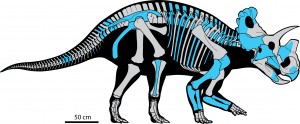
Reconstruction of Wendiceratops pinhornensis skeleton showing the bones that have been found to date in blue. Credit: Danielle Dufault
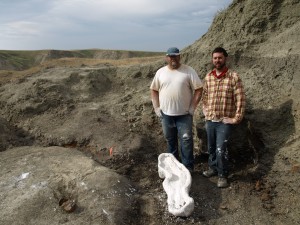
Photograph of Dr. Michael Ryan (left) and Dr. David Evans (right), co-authors of the paper describing Wendiceratops pinhornensis. Credit: Derek Larson

